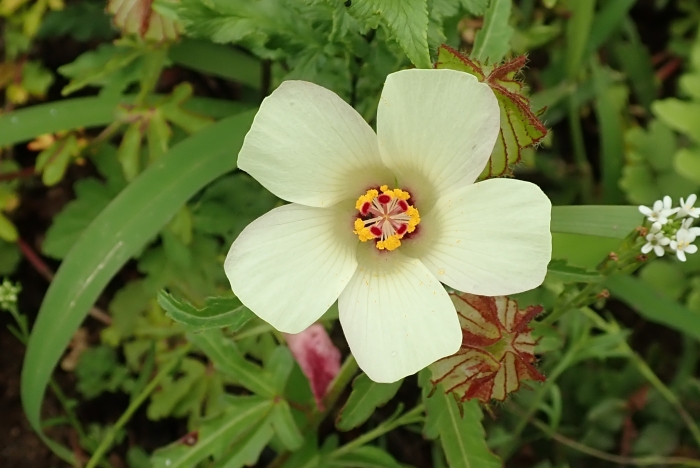Flower Of An Hour
(Hibiscus trionum)
Flower Of An Hour (Hibiscus trionum)
/
/

Peter Warren
Public Domain

















































Estimated Native Range
Summary
Flower Of An Hour is appreciated for its unique, showy flowers and its ability to grow in a variety of soil conditions, although it prefers well-drained soils. It is often used in annual borders, wildflower meadows, and as a filler in mixed beds due to its ease of maintenance and rapid growth. In cultivation, it requires full sun and moderate watering. While it is not particularly prone to diseases, it can become weedy due to its prolific self-seeding, which also contributes to its potential invasiveness when grown outside its native range. Gardeners should be cautious and check local regulations before planting to prevent unwanted spread.CC BY-SA 4.0
Plant Description
- Plant Type: Herb
- Height: 1.5-2 feet
- Width: 1.5-2 feet
- Growth Rate: Rapid
- Flower Color: Cream, White
- Flowering Season: Summer, Fall
- Leaf Retention:
Growth Requirements
- Sun: Full Sun
- Water: Medium
- Drainage: Slow, Medium, Fast
Common Uses
Bee Garden, Bird Garden, Border Plant, Butterfly Garden, Deer Resistant, Edible*Disclaimer: Easyscape's listed plant edibility is for informational use. Always verify the safety and proper identification of any plant before consumption., Hummingbird Garden, Low Maintenance, Potted Plant, Showy Flowers
Natural Habitat
Native to the Mediterranean region and prefers open, sunny environments such as grasslands and fields
Other Names
Common Names: Bladder Hibiscus, Bladder Ketmia, Bladder Weed, Modesty, Puarangi, Shoofly, Venice Mallow, Flower-Of-An-Hour, Venice-Mallow, Bladder Ketmia
Scientific Names: , Hibiscus trionum, Hibiscus tridactylites, Hibiscus ternatus, Hibiscus trionum var. ternatus, Hibiscus pusillus, Hibiscus africanus, Hibiscus humboldtii, Hibiscus hastifolius, Hibiscus calisureus
GBIF Accepted Name: Hibiscus trionum L.